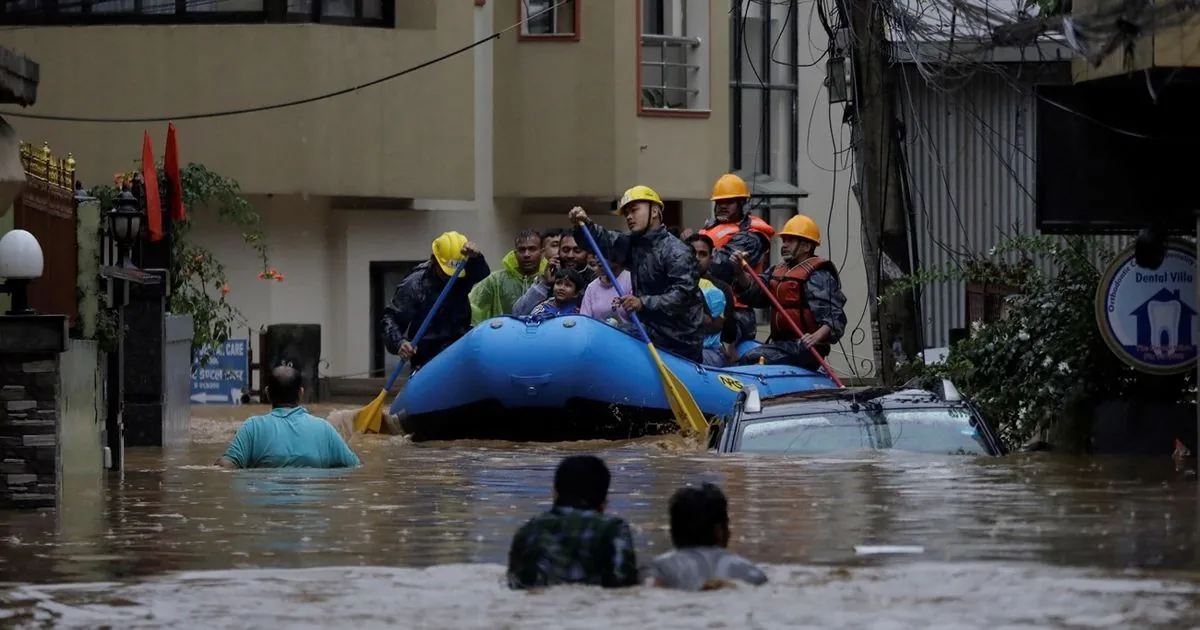Nepal Grapples with Deadly Floods: 151 Dead, Schools Closed
Heavy rainfall in Nepal triggers devastating floods and landslides, claiming 151 lives. Authorities close schools for three days as Kathmandu valley faces severe impact and infrastructure damage.

Nepal, a landlocked country in South Asia bordered by China and India, is currently facing a severe natural disaster. Heavy rainfall over two days has resulted in catastrophic floods and landslides across the Himalayan nation, leading to a significant loss of life and widespread damage.
As of September 29, 2024, officials report that 151 people have lost their lives, with an additional 56 individuals still missing. The Kathmandu valley, home to approximately 4 million people and the nation's capital, has been particularly hard hit, with 37 fatalities recorded in this region alone.
In response to the crisis, authorities have made the decision to close schools for three days. Lakshmi Bhattarai, a spokesperson for the education ministry, explained, "We have urged the concerned authorities to close schools in the affected areas for three days." This measure aims to address the difficulties faced by students and parents due to damaged school buildings and infrastructure.
The severity of the rainfall is evident in the statistics: some areas of Kathmandu reported precipitation levels reaching 322.2 mm (12.7 inches). This deluge caused the main Bagmati River, considered holy by both Hindus and Buddhists, to rise 2.2 meters (7 feet) above the danger mark.
Rescue efforts are ongoing, with police working tirelessly to recover victims. In one particularly tragic incident, rescuers retrieved 16 bodies from two buses that were swept away by a massive landslide on a key route into Kathmandu.

While the situation remains critical, there are signs of potential respite. Govinda Jha, a weather forecaster in the capital, noted, "There may be some isolated showers, but heavy rains are unlikely."
Climate scientists at the International Centre for Integrated Mountain Development (ICIMOD) emphasize that haphazard development amplifies climate change risks in Nepal. Arun Bhakta Shrestha, an environmental risk official at the centre, stated, "I've never before seen flooding on this scale in Kathmandu."
The ICIMOD has called for urgent action, urging the government and city planners to increase investment in infrastructure, including underground stormwater and sewage systems, both engineered and nature-based. They attribute the severity of the flooding to poor drainage, unplanned urbanization, construction on floodplains, lack of water retention areas, and encroachment on the Bagmati River.
Nepal, home to eight of the world's ten tallest mountains, including Mount Everest, faces unique challenges in disaster management due to its mountainous terrain. The country has been working on improving its disaster preparedness strategies, recognizing the increasing threats posed by climate change to its glaciers and water resources.
In the southeast, the Koshi River, one of the largest tributaries of the Ganges, has started to show signs of receding. Ram Chandra Tiwari, the region's top bureaucrat, reported that the river's level is beginning to fall, though it had previously reached nearly three times its normal level.
As Nepal grapples with this disaster, the incident underscores the urgent need for improved infrastructure and urban planning to mitigate the impacts of extreme weather events in the future.


































